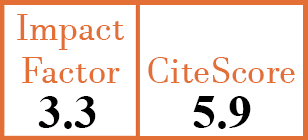Full Papers
Cost-effectiveness of infliximab in the treatment of rheumatoid arthritis in clinical practice
L.M. Virkki, Y.T. Konttinen, R. Peltomaa, K. Suontama, R. Saario, K. Immonen, J. Jäntti, T. Tuomiranta, P. Nykänen, R. Hämeenkorpi, S. Heikkilä, P. Isomäki, D. Nordström
CER3469
2008 Vol.26, N°6
PI 1059, PF 1066
Full Papers
Free to view
(click on article PDF icon to read the article)
PMID: 19210870 [PubMed]
Abstract
OBJECTIVES:
We evaluated the cost-effectiveness of infliximab therapy in Finnish RA patients in a real-life clinical setting and identified factors influencing it, using the national register of biological treatment (ROB-FIN).
METHODS:
A cost-utility analysis was performed, derived from EQ-5D, and related to HAQ score and disease activity using multiple regression. QALYs were calculated based on these utilities, using patient-level data up to the last control registered. Cost-effectiveness analyses included costs per ACR50 responder, and costs per low DAS28 score (<3.2) achieved, in combination with a clinically significant improvement (>1.2). The costs considered were direct medical costs of infliximab and cost of intravenous infusion. Patient-level costs were calculated based on dose and dosage frequency, and were related to the difference in QALYs resulting from infliximab therapy.
RESULTS:
The 297 patients had been treated with infliximab for an average of 21 months. The HAQ score and patient`s global assessment improved significantly on infliximab therapy. More than two-thirds of the patients achieved a clinically important improvement in HAQ. A QALY gain occurred in 76%. 35% of these had an incremental cost-effectiveness ratio of ≤40,000 Euro/QALY gained, the median cost being 51,884 Euro. The cost per QALY gained was significantly lower for patients achieving an ACR50 response at 3, 12 and 24 months.
CONCLUSIONS:
Treatment with infliximab and aiming at ACR50 response appears cost-effective, remembering the restrictions of an observational study set up. Current Care guidelines, which require sufficient disease control when deciding on continuing biological therapy, get support from these findings.


